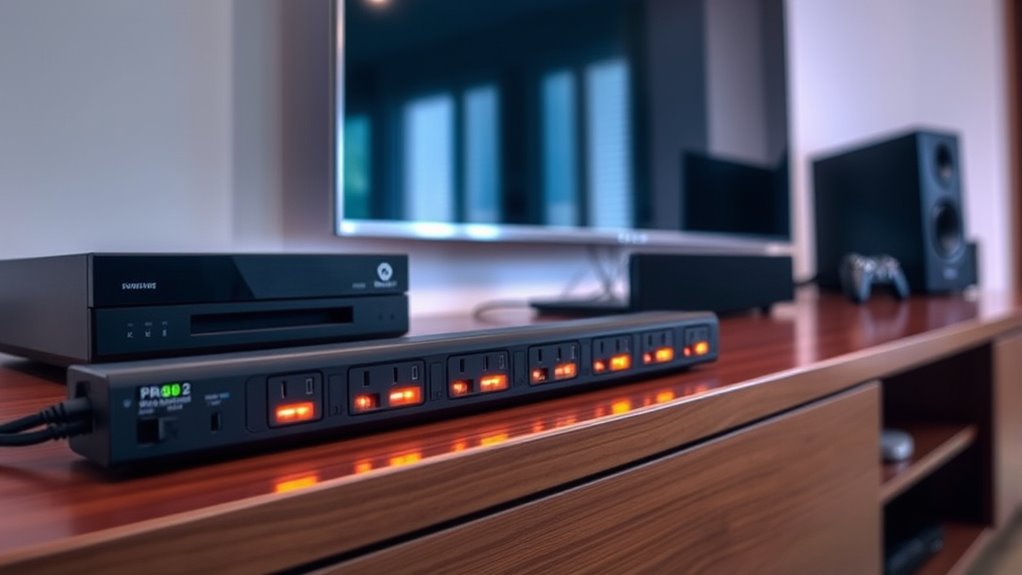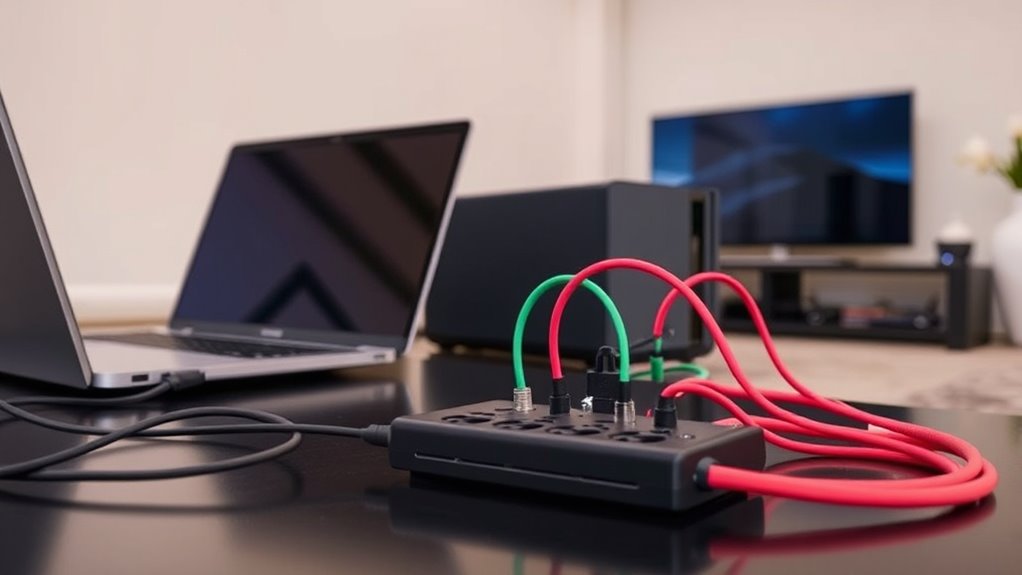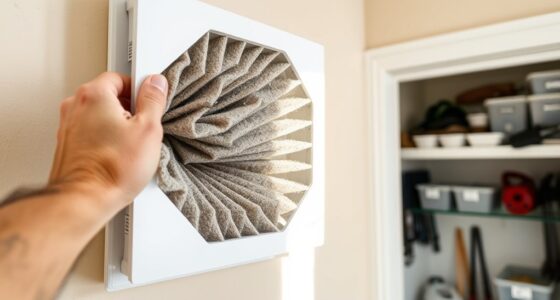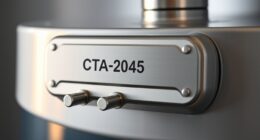Protecting your appliances from power surges starts with choosing the right surge protector for your needs and installing it properly across essential outlets. Look for models with high joule ratings to ensure better protection and avoid overloading circuits. Regularly inspect and replace surge protectors every three to five years to maintain effectiveness. By following these tips, you can minimize damage from voltage spikes and keep your electronics safe. Keep going to discover even more ways to safeguard your home.
Key Takeaways
- Choose surge protectors with high joule ratings for better energy absorption and protection.
- Properly install surge protectors on all critical appliances and electronic devices.
- Regularly inspect and replace surge protectors every three to five years for optimal safety.
- Unplug sensitive appliances during thunderstorms for extra protection beyond surge protectors.
- Avoid overloading outlets and ensure surge protectors are correctly rated for your appliances’ power needs.

Power surges can strike unexpectedly and damage your appliances, leading to costly repairs or replacements. That’s why surge protector installation should be a top priority in your home. By plugging your sensitive electronics and appliances into surge protectors, you create a barrier that absorbs excess voltage and prevents it from reaching your devices. Installing surge protectors is straightforward, but it’s essential to choose the right type for each appliance. For example, heavy-duty surge protectors are ideal for computers, gaming systems, and home entertainment centers, while smaller, multi-outlet models suit everyday devices like lamps and chargers. Proper surge protector installation not only shields your equipment but also extends its lifespan, saving you money in the long run.
Proper surge protector installation safeguards your devices and extends their lifespan, saving money in the long run.
When it comes to appliance safety tips, always make sure your surge protectors are properly rated. Look for devices with a high joule rating, which indicates how much energy they can absorb before failing. Moreover, avoid overloading outlets; plugging multiple high-power devices into a single surge protector can reduce its effectiveness and pose a fire risk. Regularly inspect your surge protectors for signs of wear, such as frayed cords or scorch marks, and replace them immediately if you notice any damage. Remember, surge protectors aren’t foolproof, especially during severe electrical storms, so consider unplugging sensitive appliances altogether during thunderstorms for added protection.
Another key appliance safety tip is to understand that surge protectors have a limited lifespan. Over time, the components inside can degrade, diminishing their ability to safeguard your devices. Most manufacturers recommend replacing surge protectors every three to five years, even if they don’t show visible damage. When replacing, opt for models with the latest safety features and certifications to ensure maximum protection. Educate everyone in your household about the importance of surge protector installation and proper usage, so all appliances are consistently protected from unexpected power fluctuations. Additionally, understanding the importance of juice cleansing and detox can help you make healthier lifestyle choices that complement your overall wellness.
Ultimately, safeguarding your appliances against power surges requires a combination of smart installation and vigilant maintenance. By integrating surge protectors into your home’s electrical setup and following appliance safety tips, you considerably reduce the risk of damage caused by voltage spikes. This proactive approach not only preserves your valuable electronics but also provides peace of mind, knowing you’ve taken steps to protect your investments. With the right surge protection strategies in place, you can confidently face electrical storms and other power anomalies, ensuring your appliances stay safe and fully functional for years to come.
Frequently Asked Questions
Can Surge Protectors Prevent All Types of Power Surges?
Surge protectors can’t prevent all types of power surges, especially those caused by transient voltage spikes or electrical noise. While they’re effective against common surges from lightning strikes or grid fluctuations, some surges may be too strong or quick for them to handle. You should understand that surge protectors provide a good defense, but they’re not foolproof against every power fluctuation, especially sudden transient voltage or electrical noise.
How Often Should I Replace My Surge Protector?
Replacing your surge protector is like changing the oil in your car—it keeps things running smoothly. You should replace it every 3 to 5 years, depending on its surge protector lifespan and how often it’s used. Check for signs of wear, frayed cords, or a tripped indicator light. Regular replacement guarantees your devices stay protected and your surge protector remains effective. Don’t wait until it’s too late!
Are There Specific Surge Protectors for Sensitive Electronics?
Yes, there are specialized surge protectors designed specifically for sensitive electronics. These protectors often offer higher joule ratings, better clamping voltage, and more precise filtering to shield delicate devices like computers and audio equipment. You should choose a specialized surge protector to guarantee your sensitive electronics stay safe during power fluctuations. Always check the specifications to confirm it’s suitable for your devices, and replace it when it shows signs of wear or after a surge event.
Do Whole-House Surge Protectors Offer Better Protection?
Yes, a whole house surge protector offers better protection because it shields your entire electrical system from power surges at the main entry point. This means your sensitive electronics and appliances are safer from voltage spikes caused by lightning or grid issues. Installing a whole house surge protection device provides extensive coverage, reducing the risk of damage and costly repairs, giving you peace of mind knowing your home is well-protected.
Can Surge Protectors Interfere With Appliance Performance?
Surge protectors generally don’t interfere with appliance performance, but you should consider appliance compatibility and surge protector limitations. Some sensitive devices might react to power fluctuations, so choose a protector designed for delicate electronics. Be aware that surge protectors can’t prevent all surges, especially severe ones, and may need replacement over time. Properly matched protectors guarantee your appliances run smoothly without risking damage or performance issues.
Conclusion
By using surge protectors, you’re giving your appliances a shield from unexpected power surges. Don’t wait until it’s too late—think of it as a small investment that can save you big headaches down the road. Remember, it’s better to be safe than sorry, so take action now to protect your valuable devices. Don’t leave yourself hanging in the wind—secure your appliances today and keep them running smoothly for years to come.










